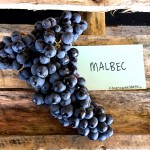The Winemaker’s Think Tank: Vol 9 – How long will my wine last?
What’s the Winemaker’s Think Tank?
Every Thursday we will post about a few frequently asked questions that our winemaker has answered. If you have a winemaking question you would like to have answered, please email us at support@juicegrape.com and we will try to get into next week’s post. Cheers! 🙂
How long will my wine last?
All wine ages differently. Certain varietals benefit from aging, others are meant to be consumed quickly. Generally, the more tannic the wine, more it will benefit from aging. Other factors influence a wine’s potential to age as well. If the winemaker chooses not to add sulfites to the wine (not recommended), the wine will not age as well and should be consumed within a year. If the proper level of sulfites are added, the wine stored at an appropriate temperature (55-62 degrees Farenheit), and not exposed to light, it should be able to age for many years. Some varietals that benefit from aging are Chardonnay, Cabernet Sauvignon, and Malbec. Some varietals that do not necessarily benefit from aging are Gewurztraminer, Sauvignon Blanc, and Cayuga.
We hope this information helps with your winemaking. If you have any follow up questions or winemaking questions in general, please email us at support@juicegrape.com.
The Winemaker’s Think Tank: Vol 7 – Grape Yield
What’s the Winemaker’s Think Tank?
Every Thursday we will post about a few frequently asked questions that our winemaker has answered. If you have a winemaking question you would like to have answered, please email us at support@juicegrape.com and we will try to get into next week’s post. Cheers! 🙂
When it comes to making wine, often there is nothing more exhilarating than sampling the fresh grapes as they come in and selecting the varietals that will best suit your individual winemaking needs. Once you have selected the varietals that you would like to make that season, the most often the next question is “How many grapes will I need to make my desired amount of wine?”. The answer changes slightly depending on the origin of the grapes. South American producers fill their crates with 18lbs of grapes. This typically requires the winemaker to purchase 4 crates (18lbs each) to yield 5 gallons of wine. The same formula roughly applies to South African grapes as well, with their grapes being packed 20lbs per crate. Obviously this will yield the winemaker a bit more juice, but the overall formula is applicable.
Fall harvest from the northern hemisphere gives us slightly different guidelines to follow for estimating yield. North American producers have larger crates, packed 36lbs/crate. On average, each crate yields 2.5 gallons of juice, the winemaker needing two crates per five gallons of desired wine. Seasonal growing conditions apply to the yield as well, rainfall having the most profound effect upon juice yield. Also, premium growing areas where the grapevines grow under stressed conditions, resulting in premium fruit will yield significantly less juice than grapes grown in irrigated fields. We suggest purchasing one additional crate per desired 5 gallons of finished product. The two crates per five gallon rule is a safe assumption when estimating juice yield, as it is more of a conservative estimate of juice yield. We often hear reports of a higher yield rate for certain west coast varietals. Berry size will affect the yield of juice as well. Pinot Noir and Grenache berries are significantly larger than Cabernet Sauvignon and Petit Syrah berries, often yielding up to 10% more juice. While a certain level of experience and research can aid in the estimated juice yield from your grapes, the basic rule of 4 crates per 5 gallons for South American/African produce and 2 crates per 5 gallons for North American produce is an easy means of determining how much produce you will need.
We hope this information helps with your winemaking. If you have any follow up questions or winemaking questions in general, please email us at support@juicegrape.com.
What to do while you wait for your wine to age?
If you are like us then you get impatient waiting for your wine to finish the aging process. Here are few things to keep you busy while you wait for your vintage to be ready.
1. Drink Last Year’s Wine – Yummy.
2. Make a Wine Kit – You can have wine on the table in 3-4 weeks! Personally we are loving the Castel del Papa and the Green Apple Riesling.
3. Search Out a New Wine Club or Two – These new wines can inspire a new blend or variety to be made next year.
4. Design Your Own Wine Label – Your wine label should represent you. Musto Wine Grape offers custom label design as well as stock labels to help you add your own flair to your wine label.
5. Drink Local – Check out your local wineries and compare wine notes with other local winemakers. Connecticut has a great Wine Trail you can check out the next time you stop by to pick up a few things.
6. Visit California Wine Country – Why not take a trip and see where your wine grapes came from? Contact Christina at cmusto@juicegrape.com for more information on where to taste, stay, and play in California Wine Country.
7. Clean and Organize Your Wine Cellar– Think of it as “spring” cleaning. I’m sure your house mates would be happy to see it organized.
8. Stock Up on Winemaking Products for Next Year – There are a lot of sales going on during the Holiday Season. Take advantage of them and get ahead for next year!
9. Plan for your next Winemaking Project – Southern Hemisphere Grapes – Grapes from Chile and South Africa will arrive as early as the beginning of May. The California grapes will arrive in August.
10. Throw a Blending Party – Invite your friends over and create some new and interesting blends.
Bring on the Bordeaux! – A Home Wine Making Experience (6)
And we are ready to go! First, we need to sanitize the press. We don’t want any gross microbes to get into our fabulous wine. Second, we shrink wrap the press to make sure the juice doesn’t squirt out at us. Third, we transfer the must into the press and let the press do it’s thing. Finally, we transfer the juice from the press to the stainless steel tank where we will be aging the wine until we decide to barrel age or add more oak additives.
You can see all the tubes attached to the press above. This is because we decided to use a bladder press. Bladder press’s are easy to use and don’t press the must too much. If you press too hard you run the risk of breaking the seeds and releasing astringent flavors. The bladder press has a happy medium of extracting optimal juice while maintaining the quality of the juice.


And now we wait… Thanks again for stopping by. Next time we will rack our wine. Stay tuned!
Side Note: Don’t Press in November, It’s Cold!!!!


















Recent Comments